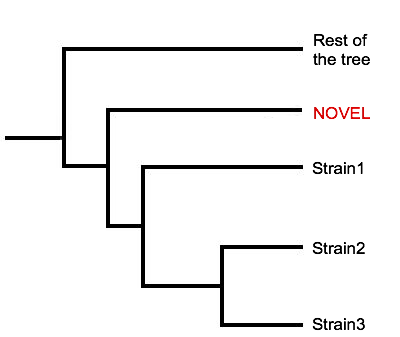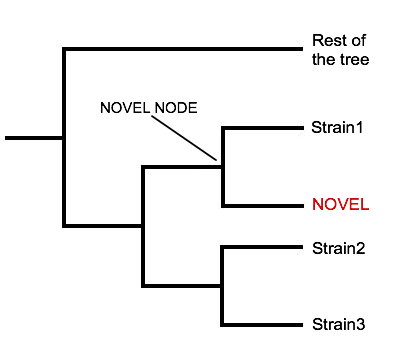StrainSeeker - Interpreting your Results
- Case 1 | KNOWN
StrainSeeker gives only one strain as a result. It means the strain is present in the database. Also relative % of all identified bacteria is shown.
# KNOWN 20%
Strain1
The result viewed on the tree is straightforward:

- Case 2 | RELATED TO GROUP(more than 1 strain given)
More than one strain aswell as the identifier "RELATED TO GROUP" indicates that the strain found in the sample is not in the database. A list of closest relatives is shown. The two examples below are very similar.
LEFT
# RELATED TO GROUP 20%
Strain1
Strain2
Strain3RIGHT
# RELATED TO GROUP 20%
Strain2
Strain3

- Case 3 | RELATED TO GROUP (1 strain given)
When only one strain is given, but it is "RELATED TO GROUP", the same applies as in Case 2. The novel strain is closest to Strain1 but is not Strain1. When this situation occurs, the Web Tool also shows a novel node to make the novel strain distinct from the known one.

